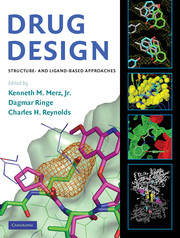Book contents
- Frontmatter
- Contents
- Contributors
- Preface
- DRUG DESIGN
- 1 Progress and issues for computationally guided lead discovery and optimization
- PART I STRUCTURAL BIOLOGY
- PART II COMPUTATIONAL CHEMISTRY METHODOLOGY
- 5 Free-energy calculations in structure-based drug design
- 6 Studies of drug resistance and the dynamic behavior of HIV-1 protease through molecular dynamics simulations
- 7 Docking: a domesday report
- 8 The role of quantum mechanics in structure-based drug design
- 9 Pharmacophore methods
- 10 QSAR in drug discovery
- 11 Predicting ADME properties in drug discovery
- PART III APPLICATIONS TO DRUG DISCOVERY
- Index
- References
11 - Predicting ADME properties in drug discovery
from PART II - COMPUTATIONAL CHEMISTRY METHODOLOGY
Published online by Cambridge University Press: 06 July 2010
- Frontmatter
- Contents
- Contributors
- Preface
- DRUG DESIGN
- 1 Progress and issues for computationally guided lead discovery and optimization
- PART I STRUCTURAL BIOLOGY
- PART II COMPUTATIONAL CHEMISTRY METHODOLOGY
- 5 Free-energy calculations in structure-based drug design
- 6 Studies of drug resistance and the dynamic behavior of HIV-1 protease through molecular dynamics simulations
- 7 Docking: a domesday report
- 8 The role of quantum mechanics in structure-based drug design
- 9 Pharmacophore methods
- 10 QSAR in drug discovery
- 11 Predicting ADME properties in drug discovery
- PART III APPLICATIONS TO DRUG DISCOVERY
- Index
- References
Summary
INTRODUCTION
Drug discovery is an extremely risky business. Practically every molecule ever made in a drug discovery research project will be a failure. It is estimated that for every ten research projects producing molecules of high-enough quality to begin clinical testing in man, 10,000 to 20,000 molecules will need to be synthesized. Of those ten clinical candidates, nine will fail, leaving just one new drug in the end. In short, the pharmaceutical industry has a failure rate on the order of 99.99%. These many failures do not come cheaply. The cost of developing a new drug is estimated to be between $500 million and $2 billion, depending on the indication and company.
As Dr. Arthur Patchett of Merck said, “Current, major stumbling blocks in drug development are often the clumsy, empirical, and time-consuming efforts required to go from an exquisitely potent in vitro inhibitor to one with good bioavailability and an adequate duration of action. This is the unglamorous part of drug development but often separates highly successful ventures from those which lag behind them.” Medicinal chemists commonly synthesize potent molecules only to find out later they have poor exposure in vivo and thus poor efficacy.
The broad term exposure can be broken down into its component factors: absorption, distribution, metabolism, and excretion, which are commonly known as ADME. Solubility is also very important and tends to be implicitly included in discussions of ADME.
- Type
- Chapter
- Information
- Drug DesignStructure- and Ligand-Based Approaches, pp. 165 - 178Publisher: Cambridge University PressPrint publication year: 2010
References
- 6
- Cited by



